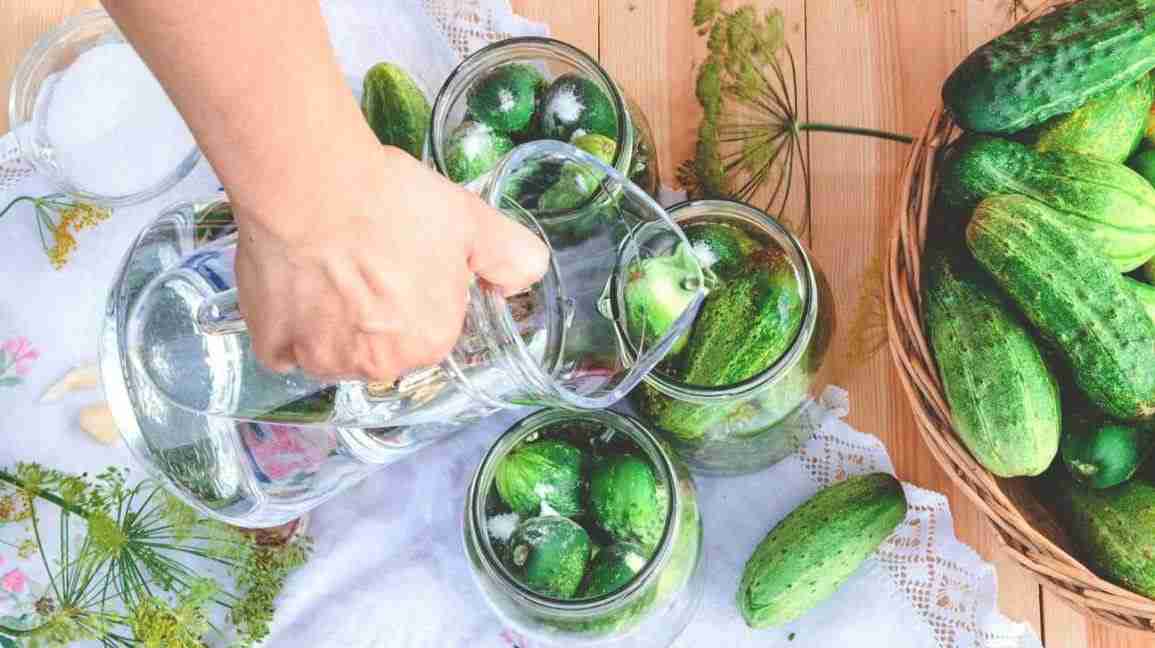White vinegar, sometimes called distilled or spirit vinegar, has been a mainstay in households worldwide for thousands of years. It’s easy to understand why.
This versatile liquid presents a treasure trove of uses for cleaning, gardening and cooking. It even has medicinal applications, too.
This article discusses some of the most popular applications for white vinegar and the safest, most effective ways to use it in your home.
Standard white vinegar is a clear solution generally containing 4–7% acetic acid and 93–96% water (
Some types of white vinegar can contain up to 20% acetic acid, but these are strictly for agricultural or cleaning purposes and not intended for human consumption.
Historically, white vinegar has been produced from the fermentation of foods such as sugar beets, potatoes, molasses or milk whey. Usually, the specific recipe depended on which food item was most readily available in a particular region (
Today, most white vinegar is made from the fermentation of grain alcohol (ethanol). This kind of alcohol doesn’t naturally contain many nutrients, so other ingredients such as yeast or phosphates may be added to kickstart the bacterial fermentation process.
SummaryWhite vinegar is a solution typically consisting of 4–7% acetic acid and 93–96% water, though types with higher acetic acid content are available for agricultural or cleaning purposes. It’s most commonly made via the fermentation of grain alcohol.
The many possible culinary applications for white vinegar make it an easy sell as a kitchen staple.
It has a stronger and somewhat harsher flavor than other types of drinkable vinegar, so you probably wouldn’t want to drink it by itself. However, it can be a very practical ingredient to have on hand as part of a recipe.
Some of the most popular uses for white vinegar in the kitchen are:
- Pickles: When paired with pickling spices and water, white vinegar makes a great base for crafting a wide array of quick pickles, including vegetables, fruits and eggs.
- Salads: A splash of white vinegar can brighten up the flavor of some types of traditional and composed salads. Always start with a small amount and conduct a taste test before adding more — it’s easy to go overboard and ruin the dish!
- Marinades and sauces: White vinegar gives an extra zing of flavor to marinades and sauces. In marinades, the acid in the vinegar also functions as a tenderizing agent for meats, seafood and vegetables.
- Baking: White vinegar can be used alongside baking soda as a leavening agent for baked goods. The acidic vinegar reacts with the alkaline baking soda and releases carbon dioxide gas that helps baked goods rise.
- Cheesemaking: Some cheeses can be crafted from milk and white vinegar. When added to milk, acidic vinegar alters the milk proteins, allowing the curds and whey to separate. The result is a mild, soft cheese.
SummaryWhite vinegar’s culinary applications include pickling, baking, marinades and cheesemaking. The flavor is strong, so start with small amounts if you’re using it for the first time.
White vinegar may also yield positive health effects that reach far beyond adding flavor to your favorite recipes.
Vinegar has been used medicinally for thousands of years. Most modern research on its health benefits focuses on the acetic acid component of the vinegar.
Because many types of vinegar contain acetic acid, the potential health benefits are not necessarily exclusive to white vinegar.
Some of the possible health benefits of vinegar include:
-
Blood sugar control: Some human studies have found that ingesting vinegar may reduce both blood sugar and insulin levels after a meal (
2 ,3 ). - Weight management: Some studies indicate that consuming vinegar may increase fullness by slowing the rate at which the stomach empties, possibly leading to reduced calorie intake and subsequent weight loss (4).
-
Reduced cholesterol: Animal studies have shown reduced cholesterol in mice given vinegar. Ultimately, more research is needed to determine a cause-and-effect relationship between vinegar and cholesterol (
5 ). -
Antimicrobial: Because of its antimicrobial properties, vinegar may be useful for treating physical ailments including nail fungus, warts and ear infections. It’s also an effective topical treatment for skin infections and burns (6,
7 ,8 ).
SummaryWhite vinegar may have significant health benefits due to its acetic acid content, including blood sugar control, weight management, reduced cholesterol and antimicrobial properties.
White vinegar has a variety of practical household applications, none of which have to do with food.
Because white vinegar has antimicrobial properties, it’s a useful disinfectant and cleaner for a myriad of surfaces and appliances.
What’s more, it’s significantly cheaper than other commercially available household cleaning agents.
Items easily cleaned with white vinegar include:
- Countertops
- Showers and bathtubs
- Toilets
- Floors
- Dishes
- Windows and mirrors
- Coffeemakers
- Laundry (as stain removal)
White vinegar also has gardening applications. It may be used for killing weeds and can help cut flowers stay fresh longer.
When used for home cleaning projects, a 50/50 ratio of vinegar to water is best. For weed removal, use full-strength vinegar.
SummaryWhite vinegar can be an effective cleaning tool for multiple household surfaces. It can also be used to control weeds in your garden or help cut flowers stay fresh.
Although white vinegar is generally safe, too much of a good thing could prove harmful.
Consumption of too much vinegar may exacerbate symptoms of inflammatory conditions in the upper gastrointestinal (GI) tract such as heartburn or indigestion.
Excessive consumption of acidic foods such as vinegar can contribute to degradation of tooth enamel. Some research indicates that white vinegar may be more damaging to your teeth than other types of vinegar (
Additionally, some research suggests a potential for adverse effects when certain blood sugar and heart medications are supplemented with vinegar. These may include low blood sugar or low potassium levels (4).
Always consult your doctor before making any drastic changes to your diet or supplement regimen.
White vinegar typically consists of 4–7% acetic acid and 93–96% water.
It can be used for cooking, baking, cleaning and weed control and may aid weight loss and lower blood sugar and cholesterol.
Consumption is safe in moderation but could be dangerous in excess amounts or alongside certain medications.
If you keep a bottle of white vinegar in your pantry, chances are it’ll come in handy in more ways than one.





